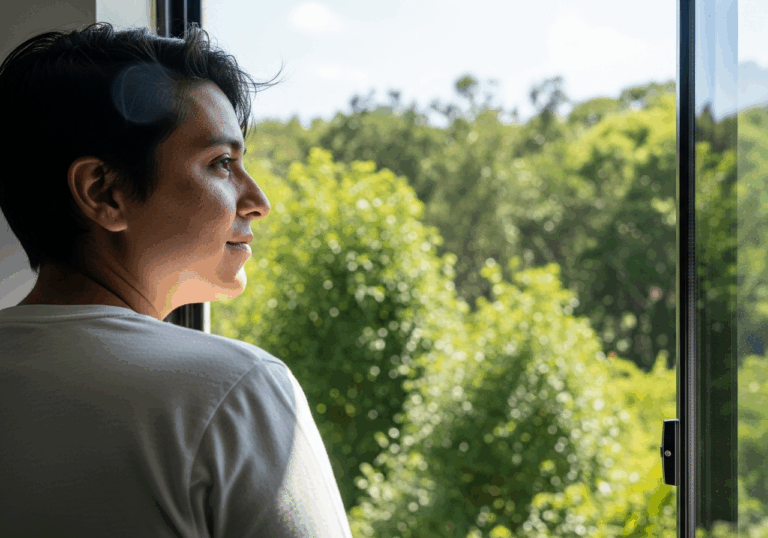Science-Backed Tips
Nature Viewing Boosts Mood in Just 3 Minutes
3 minutes of natural imagery can enhance mood by 20%.
📊 Did you know?
💡 Why It Matters
1️⃣
Viewing natural images can recalibrate autonomic balance, improving mood and reducing stress.
2️⃣
Enhancing mood through nature exposure may lead to better mental health outcomes in patients with mood disorders.
3️⃣
Incorporating nature-viewing into therapeutic practices could provide a cost-effective intervention for mood enhancement.
✅ Try These Micro-Tips
🎯
Spend 3 minutes daily viewing natural images or scenes.
🎯
Incorporate nature visuals into your workspace for a quick mood boost.
🎯
Engage in outdoor activities for at least 10 minutes to enhance your connection with nature.
🎯
Practice mindful observation of natural surroundings during walks.
📚 The study
The objective was to test the physiological adjustment theory through a simple yet profound method: having 60 patients view calming natural images for just 3 minutes.
The results were striking, revealing a negative correlation between baseline low-frequency/high-frequency (LF/HF) ratios and their subsequent changes after viewing.
Those who experienced a significant adjustment effect reported a notable improvement in vigor, suggesting that even brief exposure to nature can have a powerful impact on mood.
This study highlights the importance of mindful visual engagement with natural objects, which appears to recalibrate autonomic balance and elevate mood through sensory-regulated arousal.
The implications are profound: incorporating nature-viewing into therapeutic practices could serve as a cost-effective intervention for enhancing mood and reducing stress in individuals with mood disorders.
By harnessing the restorative power of nature, we can pave the way for better mental health outcomes, making this an essential consideration for both patients and healthcare providers alike.
❓ Frequently Asked Questions ❓
Learn more
How does viewing natural images affect mood?
Viewing natural images can recalibrate autonomic balance, leading to improved mood and reduced stress. This effect is particularly beneficial for individuals with mood disorders, as it enhances their overall well-being.
What is the significance of the LF/HF ratio in this study?
The LF/HF ratio is a measure of sympathetic activity, indicating the balance between stress and relaxation responses in the body. Changes in this ratio after viewing natural images suggest a physiological adjustment that correlates with mood improvement.
How long should one view natural images for mood enhancement?
Spending just 3 minutes daily viewing natural images can significantly enhance mood. This brief exposure is enough to trigger physiological adjustments that promote a sense of vigor.
Can nature-viewing be integrated into therapeutic practices?
Yes, incorporating nature-viewing into therapeutic practices can provide a cost-effective intervention for mood enhancement. It offers a simple way to improve mental health outcomes for patients with mood disorders.
What are some practical ways to incorporate nature into daily life?
You can incorporate nature visuals into your workspace for a quick mood boost or engage in outdoor activities for at least 10 minutes. Practicing mindful observation of natural surroundings during walks also enhances your connection with nature.
Is there a specific population that benefits more from nature-viewing?
Individuals with mood disorders show greater physiological adjustment and mood improvement from nature-viewing. However, everyone can benefit from the calming effects of nature exposure.
What physiological changes occur when viewing natural images?
Viewing natural images leads to a negative correlation between baseline LF/HF and its change, indicating a shift towards relaxation. This physiological adjustment is linked to increased vigor and improved mood.
How does nature-viewing reduce stress?
Nature-viewing reduces stress by recalibrating autonomic balance, which helps the body transition from a state of stress to relaxation. This sensory-regulated arousal fosters a more positive emotional state.
What is the relationship between mood and physiological adjustment?
The study found that greater physiological adjustment linked to nature-viewing corresponds with increased vigor in mood. This suggests that improving autonomic balance can lead to better emotional well-being.
Can anyone practice mindful observation of nature?
Yes, anyone can practice mindful observation of nature, which involves paying close attention to the natural surroundings during walks. This practice enhances the connection with nature and promotes mental well-being.





